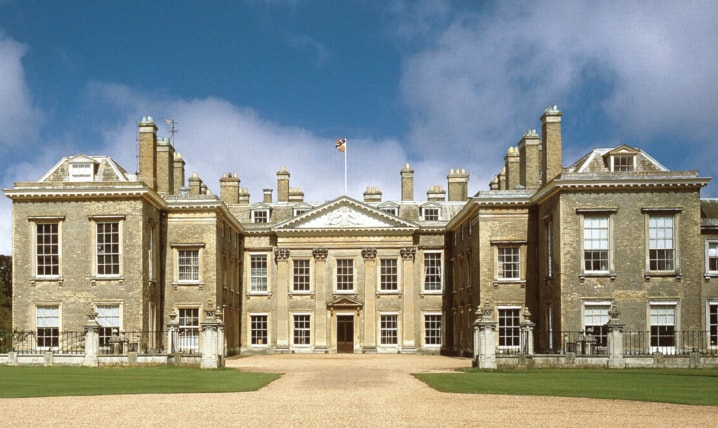For five centuries, the family of Charles, the ninth Earl Spencer, has occupied the 14,000-acre Althorp Estate in the English countryside.
His relations include Winston Churchill, George Washington and, of course, his late sister Diana, Princess of Wales. Charles is the author of several books, including Althorp: The Story of an English House.
A former NBC correspondent, Charles wrote and hosted the 12-part series Great Houses of the World and has written for Vanity Fair and several newspapers. An entrepreneur, he has licensed a line of handmade reproduction furniture, the Althorp Living History Collection, which is produced by the Theodore Alexander furniture company.
The ancestral estate is open to visitors in the summer. Many come to pay homage to Diana, who is buried there.
The 47-year-old is the father of six children and married his third wife, Karen Gordon, this year.
Q: Growing up at Althorp, did you and your sisters ever discover a lost family treasure?
A: Not really, because my grandfather was a sort of academic by nature, and he had left very, very clear records of every single thing that was in the house. There are great big leather volumes on the estate with photographs he has taken of every single item in the house and the history of that piece: who made it, who bought it, how much for, where it had been repaired, etc.
Q: Were there any parts of the house you were not allowed to explore?
A: There were some rooms that were locked. I never really understood why. I mean, one of them had loads of miniature portraits in it, and I think it was so the light wouldn’t get onto them. But we used to spend many hours exploring the attics. They were quite scary. ... They are all shuttered up, and the lights often didn’t work. They had an atmosphere of their own.
Q: Your children are the 19th generation to live at Althorp.
A: They are. They love Althorp. It looks so huge and intimidating in terms of scale, but I always encourage them to enjoy the house and treat it as a home. When they were small, they were allowed to bring their bicycles inside and all of that sort of thing.
It was the complete opposite of the way we were brought up. We had to respect everything to an absurd degree.
Q: As a young man, knowing the challenge of the upkeep of Althorp was going to land on your shoulders, did it ever feel like a burden?
A: Um, yes it did. Before I inherited, I remember as a young, a very young boy, the first time someone told me I was going to get it, I was thinking, “Oh my goodness. I don’t want this.” Because to me, age 5 or 6, it was just a very, very odd house that my grandfather fitted into and I couldn’t ever see myself fitting in there.
Although he had many wonderful qualities, he was very intimidating. He was a figure from the early 1900s, really. He hadn’t really changed his dress style or behavior style in the intervening decades. He was, by his own admission, quite difficult with people.
Q: You worked as a correspondent for NBC and did a documentary series about the 12 greatest homes. Did doing that increase your interest in Althorp?
A: I did want to see these houses. I narrowed it down to the ones still lived in by families and seeing how they coped with their legacy. Yes, I suppose in my own mind, I was comparing how these people coped with their inheritance. It was very interesting. There were a couple of modern or contemporary houses, but most of them had been in families for hundreds of years. There were some where the occupants were clearly struggling with the responsibility of it all and others who were very much enjoying their palaces, really, in a way their ancestors would have recognized.
Q: I would think it takes a creative imagination to keep up with the costs.
A: I think so, and I was very lucky that the furniture line fell into place and established in popularity. It has been a useful income stream for the house while not sort of cheapening the place. I love seeing these pieces of furniture being reproduced properly and being enjoyed around the world, and ... they are helping to fund the original. So I see it as a process, a circular process. For five centuries, the house looked after the furniture, and now the reproduction furniture can help (with) the cost of the house.
